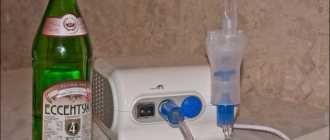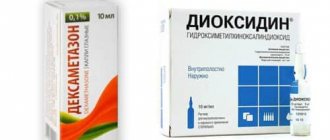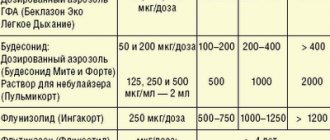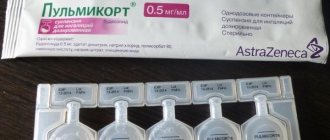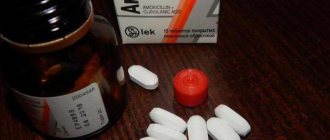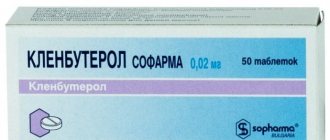Description of the drug
Dexamethasone is presented by manufacturers in the form of a solution, which is intended for inhalation using special equipment.
The liquid is transparent, packaged in ampoules of 1 or 2 milliliters. The composition is based on the glucocorticosteroid dexamethasone - a hormone that must be produced by the adrenal glands in the human body. The product is suitable for inhalation, since the active substance quickly penetrates into tissues and has anti-allergenic, immunosuppressive and anti-shock effects. To a greater extent, the anti-inflammatory effect is determined here. Swelling is eliminated.
Contraindications to the use of Dexamethasone for inhalation by nebulizer
Dexamethasone for inhalation with a nebulizer is contraindicated if:
- previously diagnosed diseases of the central nervous system;
- defects in the heart muscle that lead to heart rhythm disturbances;
- the presence of exudate in the respiratory system, but only if it is purulent;
- individual intolerance, hypersensitivity to the composition of the drug;
- elevated body temperature (over 37.5) is a general contraindication for inhalation.
There are a number of conditional contraindications to inhalations with Dexamethasone:
- diabetes;
- epilepsy in the stage of long-term drug remission;
- thromboembolism;
- liver diseases.
These pathologies require special treatment from doctors - inhalations with the glucocorticosteroid in question are prescribed to patients only in situations that are life-threatening. For example, if a patient has acute bronchospasm, then Dexamethasone will be used, even if he has a history of diabetes mellitus - it is necessary to quickly relieve swelling, relax the muscles and allow the person to breathe freely.
Composition and form
The procedures are performed with the liquid form of the medicine, which is dark glass ampoules filled with a colorless or yellowish transparent liquid. Although this drug is intended for injection into muscles, joints or veins, it is also used for inhalation, which should only be done with a nebulizer.
The main component of the solution is dexamethasone sodium phosphate. Its dosage in 1 ml of the drug corresponds to 4 mg of dexamethasone. Among the excipients of the drug are sterile water, sodium hydrogen phosphate dihydrate, glycerol and disodium edetate dihydrate. The medication is available in 1 ml ampoules, and one box includes 25 ampoules.
Instructions for use
Inhalations with Dexamethasone for children and adults for a number of diseases are of primary importance and can quickly alleviate the patient’s condition in severe conditions (cough of allergic origin, stenosing laryngotracheitis). However, it should be understood that Dexamethasone belongs to the group of glucocorticosteroids and is used only on the recommendation of a doctor.
Due to its wide range of actions: antihistamine (antiallergic), antishock, antitoxic, anti-inflammatory, Dexamethasone is used as an emergency measure and for the treatment of dangerous diseases. Inhalations with the drug are often used in pulmonology.
Dexamethasone is a drug obtained synthetically. The action corresponds to the hormone of the adrenal cortex.
Available in tablet form, eye drops and injection solutions (0.4%). The latter is used for inhalation sessions. According to the description, it is a colorless liquid sealed in ampoules.
Each consumer package contains 10 pieces of 1 or 2 ml each.
The ampoules are made of dark glass; to open them there is a notch or a special scarifier is attached. Instructions for reference are included in each consumer package.
The properties of Dexamethasone allow it to be prescribed for pathologies:
- with spasmodic cough with attacks of suffocation;
- for respiratory diseases of viral and bacterial etiology (laryngitis, pharyngitis, tracheitis);
- with pneumonia in the recovery stage;
- pathologies of the respiratory system of fungal origin;
- for pulmonary tuberculosis;
- bronchial asthma;
- with systemic damage to the respiratory system (cystic fibrosis).
The use of the inhalation method helps reduce the inflammatory process, relaxes the muscles of the larynx, reduces the formation of mucus and promotes its removal from the body.
The use of a hormonal drug is accompanied by a lot of side effects. With the inhalation method, these reactions are observed less frequently. A large dosage and frequency of use of Dexamethasone contribute to the manifestation of pronounced side effects, which manifest themselves:
- redness of the face;
- involuntary muscle contractions (cramps);
- arrhythmia, hypertension;
- swelling of the mucous membrane of the respiratory organs.
Exceeding doses of Dexamethasone poses a great danger. With prolonged use of the hormone, an increase in intraocular pressure or the development of glaucoma is possible.
Deviations in the functioning of the central nervous system and the occurrence of mental disorders (depression, confusion, hallucinations) are rarely observed.
Long-term drug therapy contributes to the development of drug-induced hypercortisolism syndrome (Cushing's disease).
You should know that in a number of conditions the use of the hormone is not recommended. These include:
- individual intolerance to the drug;
- fever;
- weakened immunity;
- diseases accompanied by the discharge of purulent sputum;
- cardiovascular diseases;
- mental disorder.
Persons suffering from diabetes mellitus, hypothyroidism, epileptic seizures, and high blood pressure should be prescribed Dexamethasone with caution.
The introduction of nebulizers into medical practice has made it possible to expand the range of medications used for nebulization. Modern devices convert precisely measured amounts of drugs into an aerosol. This is of great importance for hormones, an overdose of which is fraught with serious complications, including death.
The following types of inhalers are commercially available:
- Compressor.
- Ultrasonic.
- Mesh inhalers.
According to the instructions, compressor and mesh inhalers nebulize a wide range of medications, including hormones and antibiotics.
Stages of treatment with a nebulizer:
- hand cleaning with detergents;
- assembly of removable parts according to the technical data sheet and instructions;
- diluting the components and filling the container for the medicine;
- connecting the main unit (compressor) to the nebulizer and switching the key from the off state. “0” to working position “I”;
- After completing the session, the device turns off in the reverse order.
It should be borne in mind that the hormone can be used on the recommendation of the attending physician.
The hormone for manipulation must be diluted with saline solution. Recommended proportion 1:6. For 1 ml of hormone add 6 ml of saline solution. The resulting composition is added to the medicine compartment. Hormonal drugs are not used undiluted.
When organizing a session with Dexamethasone in a nebulizer, you must follow the following recommendations:
- Schedule the procedure between meals (1-1.5 hours).
- You should not read or talk during the session.
- Dexamethasone should be diluted with a sterile syringe before each procedure.
- Medicines should have a temperature of 20 to 25°C.
- Smooth, leisurely breathing through the mouth is recommended for tracheitis and laryngitis.
- You should inhale aerosol vapors through the nose for pneumonia, bronchitis, and asthma. Exhale through your mouth after a minute in your lungs.
- After the procedure, you need to wash your face and rinse your mouth.
The process ends with wet treatment of the inhaler.
The duration of therapy with hormonal inhalations ranges from 3 days to a week. The number of sessions with hormones is determined by the doctor based on the patient’s condition and the severity of the disease. In the absence of positive dynamics, the specialist increases the number of sessions. You should not reduce the frequency of inhalations on your own.
The solution for inhalation for children is prepared in the same proportion as for adults, but the amount of hormone is halved and is 0.5 ml per inhalation. To prepare the medicine, the hormone must be diluted with 2 ml of saline solution.
For laryngitis, inhalation with Dexamethasone is prescribed by a pediatrician. The procedures are done with an inhaler 2 times a day. It is necessary to observe the baby's breathing; it should be smooth, without tension, to avoid spasms. For newborn children, inhalation can be used during sleep. After treatment with Dexamethasone, improvement occurs on the 3rd day.
Nebulizer therapy occupies a leading place in the treatment of respiratory diseases in children. The medicine enters the affected organ, bypassing the systemic bloodstream and the gastrointestinal tract. Inhalation ensures 100% bioavailability of the drug and a minimum of side effects. Inhalation treatment of laryngitis in children includes a set of medications:
- Mucus thinners.
- Hormones (Dexamethasone, Pulmicort).
- Alkaline solutions.
- Antiseptics (Dioxidin, Miramistin).
It is important to observe the frequency of inhalations when the pediatrician has prescribed complex treatment. First you need to do a procedure with Lazolvan to cleanse the respiratory tract of mucus. At the next stage, inhalation with the hormone or Dioxidin.
Medicines, dosages and duration of treatment are prescribed by the doctor.
For adults
The course of treatment for adult patients with hormonal inhalations is 1 week, 3 procedures per day. For inhalation, 1 ml of the main component should be diluted sixfold. Pregnant and nursing mothers are not prescribed sessions with hormones. Inhalations with hormones are successfully used as emergency measures for swelling and spasm of the larynx, and asthmatic attacks in adult patients.
Dexamethasone should not be used after the expiration date, which is 2 years. After breaking the packaging, eye drops can be used for 4 weeks.
The hormonal drug should be stored in a place protected from children. Liquid forms of Dexamethasone are stored at a temperature not exceeding 15°C, tablets - up to 25°C. It is not recommended to freeze the medicine.
Dexamethasone is available by prescription.
The cost of the hormone depends on the region and varies from 142 to 209 rubles.
When studying 25 reviews from Internet readers, it was found:
- All respondents believe that hormone inhalations saved their children with false croup. The activities were carried out in a hospital as prescribed by a pediatrician.
- A reader of a newborn baby notes the emergency measures of the ambulance team in helping a child with false croup with the prescription of Dexamethasone.
Conclusion
Dexamethasone is an emergency hormonal drug. The use of the drug saves the lives of small patients with false croup, adults with allergic stenosis. However, you should remember that you should not use it yourself to avoid side effects.
Using the solution without a doctor's prescription is strictly prohibited. Its task is to determine the type and cause of the disease in order to formulate appropriate treatment.
Solution therapy is carried out in the following situations:
- the medicine helps with cough - dry and irritating, caused by an allergic reaction;
- therapy for pneumonia is provided - but it is prohibited to use during exacerbation of the disease;
- tuberculosis;
- various forms of bronchitis;
- detection of fungal infections of the mucous membranes of the throat and nose;
- Use with care for adenoids - only with the permission of the attending physician.
In most cases, treatment of children with Dexamethasone is carried out for a runny nose - it is important to take into account the absence of elevated body temperature, aches in the bones and joints. Hormonal therapy for children is used only in extreme cases - when medications with a reduced dosage do not give a positive result.
- In childhood, 0.5 ml of Dexamethasone is used for one inhalation.
- It is recommended to dilute this amount of medication with 2 milliliters of saline solution - and only after that add the drug to the nebulizer chamber.
- The child should breathe the medication calmly so that sharp breaths do not worsen his condition.
- During inhalations, a special mask is used for children.
- The duration of the procedure is usually from 5 to 10 minutes.
- After the manipulation, you should rinse your mouth with clean water and do not eat anything for at least one hour.
- Such inhalations are usually prescribed for 3 days, 2 procedures each, however, the treatment regimen can be changed (depending on the diagnosis and condition of the small patient).
- If the child is over 12 years old, the dosage and proportions correspond to those used in adults - for inhalation in adolescents, take 1 ml of Dexamethasone and 2 ml of saline solution.
Indications and contraindications
Dexamethasone inhalation given to a child is prescribed for the treatment of a limited number of diseases. These include:
- pneumonia;
- bronchiectasis;
- acute respiratory diseases;
- damage to the respiratory tract by a fungal infection;
- tuberculosis;
- pharyngitis;
- cystic fibrosis;
- bronchitis;
- bronchial asthma;
- allergic and dry cough;
- false croup
When inhaled with Dexamethasone, the smallest particles of the drug begin to settle on the walls of the child’s respiratory tract, exerting a local effect. This contributes to the disappearance of attacks of dry cough, sputum begins to form and is quickly eliminated. Such inhalations provide an anti-inflammatory effect.
But even such procedures cannot prevent the active substance from entering the circulatory system. That is why the drug is contraindicated in the following cases:
- purulent sputum;
- mental illness;
- high body temperature above 38 degrees;
- hypersensitivity to the components of the drug;
- severely weakened immunity;
- heart diseases.
With extreme caution and strictly according to indications, Dexamethasone is prescribed to a child with one of the following diseases:
- hypothyroidism;
- thromboembolism;
- diabetes;
- cirrhosis of the liver;
- heart failure;
- epilepsy;
- arterial hypertension.
Inhalations with Dexamethasone for laryngitis
To relieve swelling of the throat and reduce wheezing during laryngitis in a child, the doctor prescribes inhalations with Dexamethasone. They should be carried out using a nebulizer .
This helps eliminate the possibility of getting a burn to the laryngeal mucosa. For the procedure, ampoules are usually used with the drug contained in them, which must be diluted in saline solution. For a child, 0.5 ml of the product is mixed with 2 ml of saline solution. In its pure form, Dexamethasone can cause shock. The resulting solution is poured into a nebulizer, which is a new generation inhaler. It sprays the medicine, converting it into an aerosol. Inhalation for laryngitis should be carried out for a child 2 times a day, wearing a special mask. The child should breathe calmly, without sudden exhalations and inhalations, otherwise a sharp spasm may occur . For an infant, inhalation through a nebulizer for laryngitis is performed in a lying position. You need to wait until he falls asleep and put a mask on him.
The procedure through a nebulizer is carried out for 5 – 10 minutes. After it is finished, rinse your mouth with warm water. However, you should not eat food 30 minutes before the procedure and for an hour after it. The course of treatment is usually a week with a frequency of procedures four times a day.
The peculiarity of inhalations for laryngitis is that the child’s swelling goes away very quickly, but this condition is short-term, as a result of which sometimes more procedures may be required. For children, Dexamethasone is usually prescribed at more severe stages of the disease , when a complication has already developed. In this case, with pharyngitis and laryngitis, inflammation noticeably decreases only on the third day.
How it works
Dexamethasone is a glucocorticoid hormone, so it has an anti-inflammatory as well as anti-allergic effect. In addition, this substance affects energy metabolism and the functioning of the pituitary gland.
The use of such a drug, if prescribed in the form of inhalations, helps eliminate swelling of the throat, relieve coughing and reduce wheezing. The medicine acts on the source of inflammation, blocking the formation of substances that support the pathological process.
Thanks to its effect on the vascular walls, tissue swelling goes away, and immune system cells accumulate less at the site of inflammation. This leads to a gradual decrease in such manifestations of the disease as hoarseness of voice, wet or barking cough, feeling of lack of air, sore throat and others.
Reasons for prescribing the drug for inhalation
With the help of inhalation, the medicine has a quick effect, so it is often used as an emergency medicine to relieve asthma attacks. The high effectiveness and safety of this method of therapy is due to the mechanism of action: the substance has a direct effect in areas of inflammation, reaching the target with breathing, and not through the gastrointestinal tract or through the circulatory system. Thanks to this, the drug has fewer side effects and, when used wisely, does not cause an overdose. As a result of the procedure, the patient quickly becomes able to breathe easier, and lasting improvement develops after just a few sessions.
The active substance of the drug quickly penetrates into the tissues of the respiratory system, providing several actions at once: it inhibits inflammatory processes, eliminates allergy factors, relieves the body’s state of shock, and soothes.
Thanks to the combined effect of the properties of Dexamethasone, bronchial hyperactivity and tissue swelling are eliminated, the release of arachidonic acid and the formation of its metabolites, which cause allergic reactions, are inhibited.
The drug is prescribed by inhalation for:
- Dry or allergic cough
- Bronchitis of various origins
- Recovery from pneumonia
- Pharyngitis
- Laryngitis
- BA
- Cystic fibrosis
- Bronchiectasis
- Respiratory diseases with accompanying severe cough
- Mycotic respiratory tract infections.
Instructions
Instructions for use are presented as follows:
- First, consult a doctor and study the instructions offered by the manufacturers.
- Inhalations with Dexamethasone are often prohibited for children, since hormone therapy has a negative effect on the immune system and metabolism. Treatment with hormonal drugs is prescribed only for serious pathologies in children.
- A nebulizer is used for inhalation. If it is not available, you are allowed to use a basin and hot water - they sit over it, covered with a blanket. This treatment has a positive result, but the solution is less concentrated.
- Dissolve the medicine in saline in a ratio of 1:6 - add 6 milliliters of saline per 1 milliliter of the drug.
- Pour the resulting solution into the nebulizer and use it in accordance with the instructions.
The use of the medicine in question is not difficult, but it is necessary to follow the recommendations for use in order to avoid complications.
Indications for inhalations with Dexamethasone
Indications for inhalation with Dexamethasone are considered to be almost all diseases of the respiratory tract. Since the drug has a powerful therapeutic effect, it is advisable to use it to treat exacerbations of chronic pathologies.
What is it most often prescribed for?
Dexamethasone is most often prescribed for inhalation procedures for:
- pneumonia - only at the recovery stage;
- pulmonary tuberculosis - regardless of the stage of development;
- pathologies of the respiratory system of fungal origin;
- swelling of the larynx, which is accompanied by suffocation.
Tuberculoma
If the patient has adenoiditis (inflammation of the adenoids), then the drug is prohibited for use. Inhalations are also prescribed with great caution for a runny nose - the procedure will be effective in childhood, but only if there is no purulent content in the maxillary sinuses.
Against cough
Dexamethasone is also prescribed for cough, regardless of its nature - allergic, viral, bacteriological. The main “task” of inhalations with the drug in question is to relieve coughing attacks and make them less frequent. After 2-4 inhalations, the patient notices the formation of sputum in the respiratory tract, which begins to drain almost immediately.
If the cough is wet, then the use of Dexamethasone is not advisable. For children, this drug is prescribed only when absolutely necessary - for example, if the cough is dry, allergic and paroxysmal, up to vomiting.
For laryngitis
In pediatric practice, Dexamethasone is most often prescribed for laryngitis, which is severe and accompanied by laryngospasms. Inhalations are carried out using a nebulizer; the medicinal solution must be diluted with saline.
The peculiarity of the manipulations is the rapid, almost instantaneous disappearance of swelling and the release of breathing. But the result obtained is short-lived, so the procedure will have to be carried out several times a day. If laryngitis is severe, the disease is advanced, then stable relief of the patient’s condition will be observed only on the 3rd day.
For sore throat
For angina, as a rule, Dexamethasone is not prescribed. The only exception is a disease that occurs with laryngeal edema and occurs against the background of laryngitis. In this case, inhalations are short-term in nature and are necessary only to alleviate the patient’s well-being.
Features of the procedure
Side effects quite often occur when the drug is administered intravenously or intramuscularly. During inhalations, they can be expressed very weakly or completely absent. There is a danger in case of an overdose of the drug. The following conditions may occur:
- swelling of the mucous membrane of the respiratory tract;
- interruptions in the heart;
- convulsive phenomena;
- facial redness.
Quite rarely, inhalations with Dexamethasone can provoke mental disorders in a child:
- disorientation;
- depression or paranoia;
- hallucinations;
- confusion accompanied by agitation and restlessness;
- euphoria;
- manic-depressive episodes.
Quite rarely, side effects can be expressed in the form of the development of glaucoma or cataracts, increased intraocular pressure, and sudden blindness. The respiratory tract may experience pain, burning, tingling and numbness. If the dosage of the drug is systematically exceeded over several weeks, Cushing's syndrome may develop.
Thus, a child with laryngitis should be treated with Dexamethasone only as directed by a doctor. Inhalation of this drug through a nebulizer helps to quickly alleviate the patient’s condition, especially at the initial stage of the disease. As practice shows, such procedures help reduce the baby’s recovery time by 2–3 times.
If the doctor has authorized the use of the solution to treat children, it is combined with saline solution in a dosage of 0.5 milliliters of the drug (3 milliliters of saline solution is added to 0.5 milliliters of Dexamethasone). The presented dosage is used to treat the disease twice a day. Adults are prescribed a dosage of 1 milliliter of the main product three times a day.
Each time a new solution is prepared - the use of the old one is prohibited, since it is ineffective and sometimes harmful to health.
If the dosages are followed, there should be no problems. But if you exceed the concentration or time of the procedure, you may experience coughing, bronchospasm and drying out of the respiratory tract mucosa. This can aggravate the situation rather than help the treatment.
Sharp inhalation of vapors provokes dizziness, headaches, spatial disorientation, muscle pain, allergic skin reactions and other dangerous consequences.
In order for nebulizer inhalations to give maximum effect, they must be carried out in compliance with the instructions for use and several additional conditions. First of all, this concerns breathing: it should be smooth and rhythmic, without excessively deep breaths. Otherwise, too active breathing can provoke a severe cough or bronchospasm. In addition, you must adhere to the following recommendations:
- Inhalation of the medicinal aerosol should last at least 5 minutes and no longer than 10
- Inhalation should not be done immediately after eating: you must wait at least an hour after taking it.
- The procedure is contraindicated if the patient has swelling of the larynx, which often occurs with sore throat, as well as during a feverish state
- The solution must be prepared immediately before the procedure; it is not recommended to dissolve it in advance
- After completing the procedure, be sure to rinse your mouth with water to clean the cavity from particles of the medicine.
- Smokers should abstain from nicotine half an hour before inhalation and not smoke for the same amount of time after
- It is better to do inhalation in a sitting position
- If before the procedure the patient was active and was exposed to physical activity, then he must first restore his breathing and only then use a nebulizer. The same applies if the patient returns from a walk: inhalations can be done after returning home 30-40 minutes later.
If all the subtleties and conditions of the procedures are observed, inhalation sessions with dexamethasone will quickly have their effect: they will help with coughing, activate the discharge of sputum, facilitate its passage through the respiratory tract, and relieve inflammatory processes.
Who is prohibited from inhalation?
Like any medicine, using Dexamethasone for self-medication is extremely undesirable, even if it is used in the form of inhalation and not for oral administration. First, you need to be examined by a doctor so that he can determine whether inhalation can be done or not in each specific case. Contraindications for the procedures are:
- Individual hypersensitivity to substances contained in the drug
- Some heart and vascular diseases
- Mental disorders
- Cough with purulent sputum
- High body temperature.
The drug has no contraindications for age, so it can also be used in pediatrics. Inhalations with dexamethasone should be prescribed and carried out with caution if the patient has diabetes or has endocrine system disorders.
Another reason why you can’t do inhalations with dexamethasone is that the hormonal drug can cause a strong side effect - Quincke’s edema, anaphylactic shock. Therefore, only a physician should determine the need for procedures.
Features of the procedure
The following features of therapy are distinguished:
- one treatment procedure takes no more than 10 minutes;
- You should not start breathing the vapors of the prepared liquid immediately after eating - you need to wait for an hour;
- After the procedure, the mouth is rinsed with water;
- in half an hour you need to sit in a calm environment to restore your heart rhythm;
- prepare the liquid before pouring it into the nebulizer;
- within half an hour after the procedure it is forbidden to drink, eat and smoke;
- During inhalation, sit in an upright position and inhale the vapor as deeply as possible.
A nebulizer should not be used to treat children under one year of age. It is strictly forbidden to use the technique while the child is sleeping.
Features of application
As mentioned above, the duration of the manipulations and the determination of the dose are prescribed by the attending physician, taking into account the following factors:
- the severity of the pathology,
- what type of cough is it?
- age category of the patient,
- are there any accompanying ailments?
- presence of contraindications.
Dexamethasone is prescribed at any age. However, its use has a number of features in adults, expectant mothers and children.
For adults
As a rule, for adult patients the optimal ratio is 1:6 of medication and sodium chloride. In this case, the dosage is prescribed based on clinical indications and diagnostic results. For mild to moderate cases of the disease, the patient is prescribed 1 cube of dexamethasone 3 times a day. The duration of such therapeutic activities is 7-10 minutes.
Children
The hormonal medication in question is often used for children. The medicine is mixed with saline in a ratio of 0.5:3.0. Dexamethasone is considered relatively the safest for a child. Moreover, other analogues are strictly prohibited for use in pediatrics.
The prepared aerosol is filled into the inhaler, after which the procedure is carried out for 5 minutes, 2 times a day in the morning and evening. On the third day, the doctor assesses the child’s condition and, if positive dynamics are achieved, therapy is stopped.
For pregnant and lactating women
The use of dexamethasone during pregnancy is undesirable. However, this type of therapy is still resorted to if it is assumed that the positive result obtained significantly exceeds the risk. However, the use of the hormone requires caution and supervision by the attending physician. This applies not only to pregnancy, but also to breastfeeding.
Side effects, overdose
The use of Dexamethasone according to the instructions for inhalation comes with some recommendations:
- a hormonal drug quickly copes with swelling of the mucous membranes during the treatment of laryngitis;
- for the procedures, the drug 0.4% (0.5 ml) and saline solution (3 ml) are used;
- The duration of the procedures is 7 days, 2-4 sessions per day.
- The basis of the medicinal composition is the hormone of the adrenal cortex. The active composition has a positive effect on metabolism, protein and carbon processes, which strengthens blood vessels. This effect strengthens the cells against the negative effects of destructive processes. The medicinal composition has antiallergic effectiveness, which reduces the production of mast cells.
- Due to its immunosuppressive effectiveness, the drug composition affects lymphocytes, reducing their number, which activates the body's protective functions.
- The drug has an effect on the mediators of allergy manifestations, basophils, which reduces the risk of allergies.
Terms of purchase and storage
Purchase the product in question only with a doctor’s prescription. Store ampoules in a box from the manufacturer in the refrigerator. Storage at temperatures down to -15 degrees is allowed; keeping ampoules indoors at room temperature is not recommended.
- The purchase of Dexamethasone in ampoules is available only after presenting a prescription from a doctor. The average price of a package of such medicine is 180-200 rubles.
- The shelf life of an unopened medication is very long (it is 5 years). If the date marked on the package has expired, use of the drug is prohibited.
- The box with ampoules should be kept out of the reach of small children. The storage temperature should not exceed 25 degrees Celsius.
- After opening the ampoule, the medicine is not stored. If it is not completely used for inhalation, the remaining solution should be discarded.
Analogs
Dexamethasone has analogues in solution form - Dexazone, Dexamethasone Vial, Dexamed, Megadexan, Dexamethasone-Ferein.
It is useful to use Dexamethasone in the treatment of the diseases presented above; it does not provoke side effects and is approved for therapy in children, but only for serious pathologies. Consult your doctor and take the treatment correctly.
If necessary, replace Dexamethasone in inhalations, the pediatrician may prescribe other hormonal drugs, for example:
- "Hydrocortisone." This hormonal medicine is used for laryngospasm in children over 2 years of age, but if necessary, it can be prescribed by doctors at an earlier age. For inhalation, ampoules with suspension are used.
- "Pulmicort". The main ingredient of this drug is budesonide. The medicine is produced in the form of a dosed suspension and is prescribed for inhalation for bronchial obstruction or false croup for children over six months old.
A child with laryngitis or other respiratory tract disease may be prescribed inhalations with Ambrobene, Ventolin, Berodual, Fluimucil and other medications. However, they have completely different active ingredients, the effect on the respiratory tract is different, so they cannot be called analogues of Dexamethasone. Only a doctor should select such treatment for children.
General information about the drug
To reduce swelling in the throat, a specialist prescribes inhalation with Dexamethasone for laryngitis. The drug is a hormonal drug with anti-shock, anti-toxic, desensitizing, anti-inflammatory and anti-allergic effects.
As an inhalation, it is used mainly in the presence of bronchitis and laryngitis, which occur in a complex form, with laryngotracheitis.
In addition, it can be used for the following pathologies:
- bronchiectasis;
- respiratory tract infection;
- cystic fibrosis;
- tuberculosis;
- inflammatory processes in the lungs during the recovery process;
- pharyngitis.
Dexamethasone is made from hormones of the adrenal cortex. It has a strong effect on protein and carbohydrate metabolism. Available in the following dosage forms:
- drops;
- ampoules;
- pills.
During colds, such an unfavorable consequence as obstruction of the respiratory tract occurs. This pathology is often observed in children of preschool age and is the body’s response to an infectious lesion. During the course of the disease, pathogenic microflora attacks the human body, as a result of which the cells begin to produce mediators of the inflammatory process. Their excess provokes the appearance of swelling. In the process of growing up, the body adapts to various negative factors and produces fewer of these elements.
In this case, you cannot carry out independent treatment, but immediately contact a specialist. When complications such as swelling appear during the disease, the doctor will prescribe Dexamethasone. To keep its effect on the children's body minimal, it is used as inhalation.

